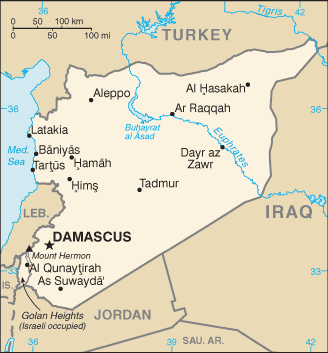After warning Syria not to fly planes in the Hasakeh Province or risk getting them shot down by US planes in the area, the Pentagon is struggling to convince reporters that there is some sort of distinction between this zone you can’t fly in and a “no-fly zone.”
 Fighting erupted between Syrian Army and Kurdish YPG forces in the city of Hasakeh late last week, with the YPG attempting to take the rest of the city, which had long been jointly held and jointly defended, As the fighting escalated, Syrian warplanes bombed Kurdish forces.
Fighting erupted between Syrian Army and Kurdish YPG forces in the city of Hasakeh late last week, with the YPG attempting to take the rest of the city, which had long been jointly held and jointly defended, As the fighting escalated, Syrian warplanes bombed Kurdish forces.
The US has its trooped embedded with the Kurdish forces, and argued that the Syrian airstrikes were endangering them. Over the weekend they repeatedly scrambled fighter jets to chase off the Syrian planes, warning they were going to ‘defend themselves.”
The Pentagon has since expanded this to declaring the area “an exclusion zone,” which is distinct from a no-fly zone because the Pentagon says it is a different thing. Spokesman Peter Cook insisted the US has warned Syria not to fly planes in the area for a long time now.
In practice, the move is a dramatic escalation, and Cook’s arguing of semantics didn’t mean much of anything, as he spent the rest of the press briefing railing against the Syrian military for contesting control of Aleppo with al-Qaeda’s Nusra Front, and insisted that the Kurds would continue to enjoy US military support in the fighting.
Every indication is that the Kurds started this fight over Hasakeh, and that the military was more than content to leave the city jointly-held. Russia has been trying to get the two sides to stop fighting, with the only condition being that the Kurds return seized checkpoints to the military. The US, by contrast, seems more than eager to keep the fighting going, and to expand the war.


